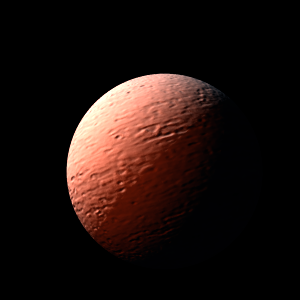|
|
Space Astro
|
Info for exoplanet "Emyagu-ju"
| Scientific (actual) data |
|---|
| Name | HD 77338 b |
| Planet status | Confirmed |
| Mass sini | 0.05 |
| Orbital period | 5.7561 |
| Semi major axis | 0.0614 |
| Discovered | 2012 |
| Updated | 2024-10-11 |
| Publication | Published in a refereed paper |
| Detection type | Radial Velocity |
| Mass measurement type | Radial Velocity |
| Star name | HD 77338 |
| Right ascension | 135.3° |
| Declination | -25.53° |
| Mag v | 8.63 |
| Star distance | 40.75 |
| Star metallicity | 0.35 |
| Star mass | 0.93 |
| Star radius | 0.88 |
| Star sp type | K0V |
| Star age | 3.97 |
| Star temperature | 5370 |
| Wikipedia article | HD 77338 b |
Back
| |
| Fictional info (?) |
|---|
| Suggested name | Emyagu-ju |
| Planet type | Hot planet |
|
| Atmosphere | Carbon dioxide | 53% |
| Hydrogen peroxide | 28% |
| Nitrogen | 15% |
| Oxygen | 3.6% |
| Ammonia | 0.89% |
| Atmospheric pressure | 0.09 bar |
 |
| No known satellites |
| Google search for Emyagu-ju |
|
Website by Joachim Michaelis
|
|
|
|